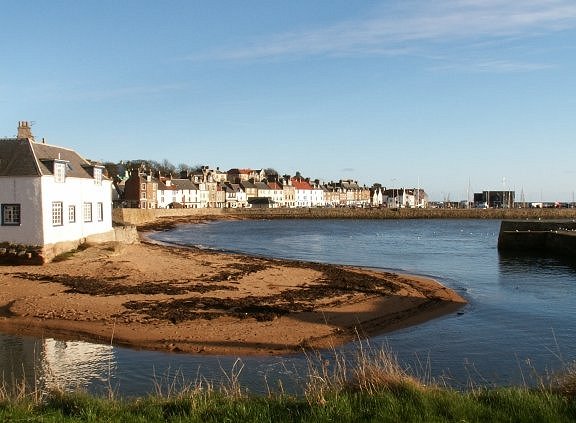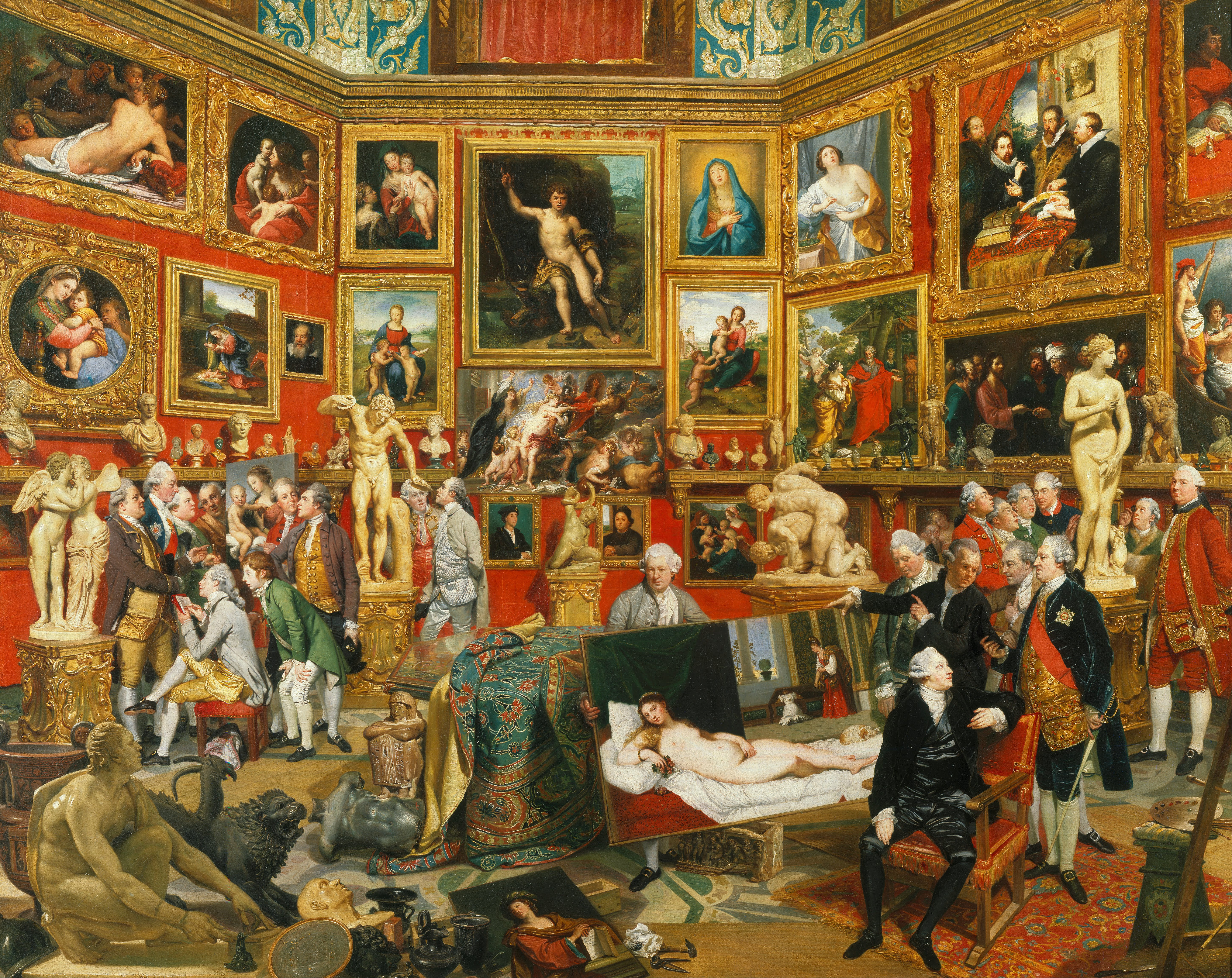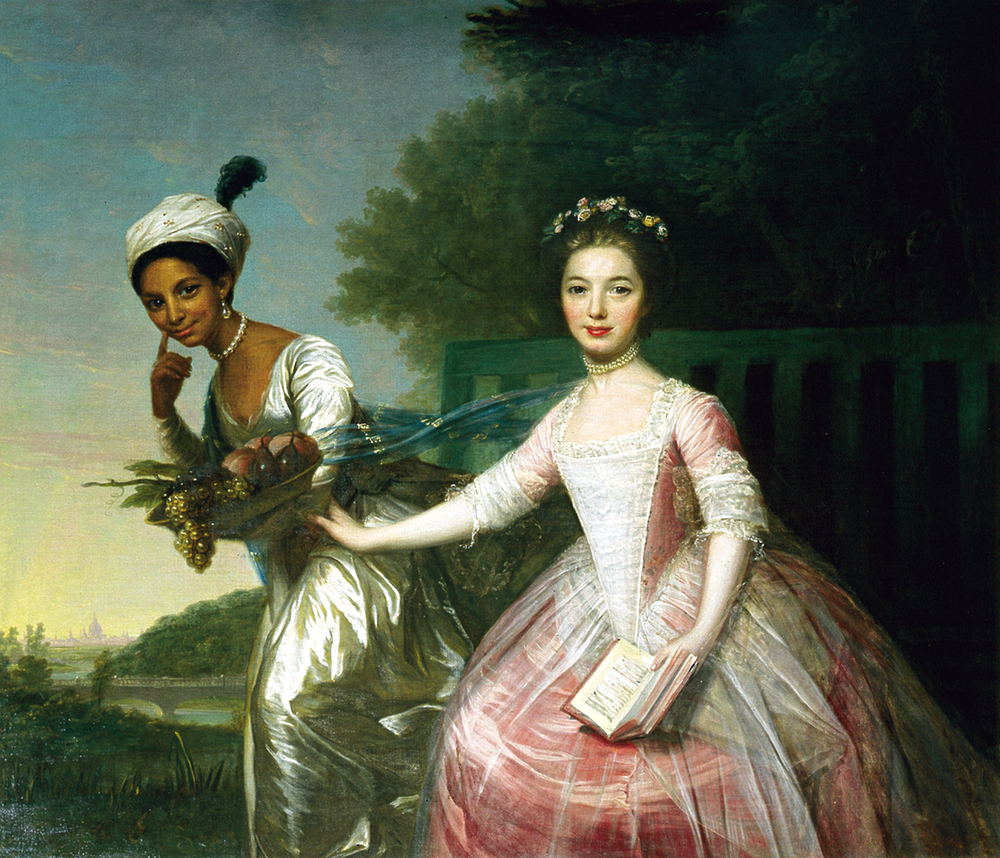|
David Martin (artist)
David Martin (1 April 1737 – 30 December 1797) was a Scottish painter and engraver. Born in Fife, he studied in Italy and England, before gaining a reputation as a portrait painter. Early life Born in Anstruther Easter, he was the first of the five children of John Martin (1699/1700–1772), Anstruther Easter's parish schoolmaster, and his second wife, Mary Boyack (?1702–1783). Painting career Martin accompanied his art teacher, the portrait painter Allan Ramsay on his tour of Italy in 1756–7, and after returning became a student at the St Martin's Lane Academy in London. There he gained premiums for life drawing in each year from 1759 to 1761. He also joined Ramsay's studio in the 1760s as its principal draughtsman, helping to produce many of the coronation portraits of George III and Queen Charlotte. Martin had his own studio by 1770, by which time he had also produced his first self-portrait (now in the National Gallery of Scotland). It shows him with a clear fair s ... [...More Info...] [...Related Items...] OR: [Wikipedia] [Google] [Baidu] |
Anstruther Easter
Anstruther ( sco, Ainster or Enster ; gd, Ànsruthair) is a small coastal resort town in Fife, Scotland, situated on the north-shore of the Firth of Forth and south-southeast of St Andrews. The town comprises two settlements, Anstruther Easter and Anstruther Wester, which are divided by a stream, the Dreel Burn. With a population of 3,500, it is the largest community on the Firth of Forth's north-shore coastline known as the East Neuk. To the east, it merges with the village of Cellardyke. Description Founded as a fishing village, Anstruther is home to the Scottish Fisheries Museum. Recreational vessels are now moored in the harbour, and a golf course is situated near the town. Anstruther Pleasure Cruises operate sightseeing/wildlife cruises from the harbour to the Isle of May, the UK's primary puffin location, on board the vessel the ''May Princess'' from April to October. An abundance of other wildlife, including seal colonies, also inhabit the island. The Waid Academy, t ... [...More Info...] [...Related Items...] OR: [Wikipedia] [Google] [Baidu] |
British Museum
The British Museum is a public museum dedicated to human history, art and culture located in the Bloomsbury area of London. Its permanent collection of eight million works is among the largest and most comprehensive in existence. It documents the story of human culture from its beginnings to the present.Among the national museums in London, sculpture and decorative and applied art are in the Victoria and Albert Museum; the British Museum houses earlier art, non-Western art, prints and drawings. The National Gallery holds the national collection of Western European art to about 1900, while art of the 20th century on is at Tate Modern. Tate Britain holds British Art from 1500 onwards. Books, manuscripts and many works on paper are in the British Library. There are significant overlaps between the coverage of the various collections. The British Museum was the first public national museum to cover all fields of knowledge. The museum was established in 1753, largely b ... [...More Info...] [...Related Items...] OR: [Wikipedia] [Google] [Baidu] |
1797 Deaths
Events January–March * January 3 – The Treaty of Tripoli, a peace treaty between the United States and Ottoman Tripolitania, is signed at Algiers (''see also'' 1796). * January 7 – The parliament of the Cisalpine Republic adopts the Italian green-white-red tricolour as the official flag (this is considered the birth of the flag of Italy). * January 13 – Action of 13 January 1797, part of the War of the First Coalition: Two British Royal Navy frigates, HMS ''Indefatigable'' and HMS ''Amazon'', drive the French 74-gun ship of the line '' Droits de l'Homme'' aground on the coast of Brittany, with over 900 deaths. * January 14 – War of the First Coalition – Battle of Rivoli: French forces under General Napoleon Bonaparte defeat an Austrian army of 28,000 men, under ''Feldzeugmeister'' József Alvinczi, near Rivoli (modern-day Italy), ending Austria's fourth and final attempt to relieve the fortress city of Mantua. * January 26 & ... [...More Info...] [...Related Items...] OR: [Wikipedia] [Google] [Baidu] |
1737 Births
Events January–March * January 5 – Spain and the Holy Roman Empire sign instruments of cession at Pontremoli in the Grand Duchy of Tuscany in Italy, with the Empire receiving control of Tuscany and the Grand Duchy of Parma and Piacenza, in return for Don Carlos of Spain being recognized as King of Naples and King of Sicily. * January 9 – The Empires of Austria and Russia enter into a secret military alliance that leads to Austria's disastrous entry into the Russo-Turkish War. * January 18 – In Manila, a peace treaty is signed between Spain's Governor-General of the Philippines, Fernándo Valdés y Tamon, and the Sultan Azim ud-Din I of Sulu, recognizing Azim's authority over the islands of the Sulu Archipelago. * February 20 – France's Foreign Minister, Germain Louis Chauvelin, is dismissed by King Louis XV's Chief Minister, Cardinal André-Hercule de Fleury * February 27 – French scientists Henri-Louis Duhamel du Monceau and Georges ... [...More Info...] [...Related Items...] OR: [Wikipedia] [Google] [Baidu] |
National Portrait Gallery (United Kingdom)
The National Portrait Gallery (NPG) is an art gallery in London housing a collection of portraits of historically important and famous British people. It was arguably the first national public gallery dedicated to portraits in the world when it opened in 1856. The gallery moved in 1896 to its current site at St Martin's Place, off Trafalgar Square, and adjoining the National Gallery. It has been expanded twice since then. The National Portrait Gallery also has regional outposts at Beningbrough Hall in Yorkshire and Montacute House in Somerset. It is unconnected to the Scottish National Portrait Gallery in Edinburgh, with which its remit overlaps. The gallery is a non-departmental public body sponsored by the Department for Digital, Culture, Media and Sport. Collection The gallery houses portraits of historically important and famous British people, selected on the basis of the significance of the sitter, not that of the artist. The collection includes photographs and caricatur ... [...More Info...] [...Related Items...] OR: [Wikipedia] [Google] [Baidu] |
Johan Zoffany
Johan Joseph Zoffany (born Johannes Josephus Zaufallij; 13 March 1733 – 11 November 1810) was a German neoclassical painter who was active mainly in England, Italy and India. His works appear in many prominent British collections, including the National Gallery, the Tate Gallery and the Royal Collection, as well as institutions in continental Europe, India, the United States and Australia. His name is sometimes spelled Zoffani or Zauffelij (on his grave, it is spelled Zoffanij). Life and career Of noble Hungarian and Bohemian origin, Johan Zoffany was born near Frankfurt on 13 March 1733, the son of a cabinet maker and architect in the court of Alexander Ferdinand, 3rd Prince of Thurn and Taxis. He undertook an initial period of study in a sculptor's workshop in Ellwangen during the 1740s, possibly the shop of Melchior Paulus, and later at Regensburg with the artist . In 1750, he travelled to Rome, entering the studio of Agostino Masucci. In the autumn of 1760, he arrived ... [...More Info...] [...Related Items...] OR: [Wikipedia] [Google] [Baidu] |
Dido Elizabeth Belle
Dido Elizabeth Belle (June 1761 – July 1804) was a British heiress and a member of the Lindsay family of Evelix. She was born into slavery and illegitimate; her mother, Maria Belle, was an enslaved African woman in the British West Indies. Her father was Sir John Lindsay, a British career naval officer who was stationed there. Her father was knighted and promoted to admiral. Lindsay took Belle with him when he returned to England in 1765, entrusting her upbringing to his uncle William Murray, 1st Earl of Mansfield, and his wife Elizabeth Murray, Countess of Mansfield. The Murrays educated Belle, bringing her up as a free gentlewoman at their Kenwood House, together with another great-niece, Lady Elizabeth Murray, whose mother had died. Lady Elizabeth and Belle were second cousins. Belle lived there for 30 years. In his will of 1793, Lord Mansfield provided an outright sum and an annuity to her, making her an heiress. Early life Dido Elizabeth Belle was born into slavery in 17 ... [...More Info...] [...Related Items...] OR: [Wikipedia] [Google] [Baidu] |
Fake Or Fortune?
''Fake or Fortune?'' is a BBC One documentary television series which examines the provenance and attribution of notable artworks. Since the first series aired in 2011, ''Fake or Fortune?'' has drawn audiences of up to 5 million viewers in the UK, the highest for an arts show in that country. ''Fake or Fortune?'' was created by art dealer and historian Philip Mould, together with producer Simon Shaw. It was inspired by Mould's 2009 book ''Sleuth'', after which the programme was originally to be entitled. It is co-presented by Mould and journalist Fiona Bruce, with specialist research carried out by Bendor Grosvenor during the first 5 series. Forensic analysis and archival research is carried out by various fine art specialists. Each series first aired on BBC One, except for series 3, which was shown mistakenly on SVT in Sweden before being broadcast in the UK. Format In each episode Philip Mould and Fiona Bruce focus their attention on a painting (or a group of paintings), ... [...More Info...] [...Related Items...] OR: [Wikipedia] [Google] [Baidu] |
South Leith Parish Church
South Leith Parish Church, originally the Kirk of Our Lady, St Mary, is a congregation of the Church of Scotland. It is the principal church and congregation in Leith, in Edinburgh. Its kirkyard is the burial place for John Home (author of ''Douglas'') and John Pew, the man from whom the author Robert Louis Stevenson reputedly derived the character of Blind Pew in the novel ''Treasure Island''. The church has been repaired, used as an ammunition store and reconstructed but still retains the basic layout of the nave of the old church. History The church has a long history although most of the visible building is more recent. The church began as a chapel dedicated to St Mary which was erected in 1483 and dedicated in 1487. (From the twelfth century South Leith had been part of the parish of ''Restalrig'' and had no church of its own.) As part of the dedication King James III of Scotland gave 18 shillings to the kirk. The church was originally a large one, with nave, chancel, ... [...More Info...] [...Related Items...] OR: [Wikipedia] [Google] [Baidu] |
George IV
George IV (George Augustus Frederick; 12 August 1762 – 26 June 1830) was King of the United Kingdom of Great Britain and Ireland and King of Hanover from the death of his father, King George III, on 29 January 1820, until his own death ten years later. At the time of his accession to the throne, he was acting as Prince Regent, having done so since 5 February 1811, during his father's final mental illness. George IV was the eldest child of King George III and Queen Charlotte. He led an extravagant lifestyle that contributed to the fashions of the Regency era. He was a patron of new forms of leisure, style and taste. He commissioned John Nash to build the Royal Pavilion in Brighton and remodel Buckingham Palace, and commissioned Jeffry Wyatville to rebuild Windsor Castle. George's charm and culture earned him the title "the first gentleman of England", but his dissolute way of life and poor relationships with his parents and his wife, Caroline of Brunswick, earned him the ... [...More Info...] [...Related Items...] OR: [Wikipedia] [Google] [Baidu] |
Sir James Pringle, 4th Baronet
Sir James Pringle, 4th Baronet (1726–1809), was a British soldier and politician who sat in the House of Commons from 1761 to 1779. Pringle was the son of Sir Robert Pringle, 3rd Baronet of Stichill and his wife Catherine Pringle, daughter. of James Pringle of Torwoodlee, Selkirk and was baptized on 6 November 1726. In 1744, he joined the army in the Royal Scots Fusiliers as a 2nd Lieutenant and was a lieutenant in 1747 and captain in 1759. He served in Flanders during the War of the Austrian Succession and at Minden in 1759. He was a, major in 1759 and lieutenant-colonel in 1762. In 1761 Pringle was returned unopposed as Member of Parliament for Berwickshire. In 1765 he became lieutenant-colonel of the 59th Foot. He married Elizabeth MacLeod, daughter of Norman MacLeod of MacLeod on 11 September 1767. He was returned again for Berwickshire in the 1768 general election. In 1770 he retired from the army and in 1774 was appointed Master of the King’s works in Scotland, He w ... [...More Info...] [...Related Items...] OR: [Wikipedia] [Google] [Baidu] |
Royal Company Of Archers
The Royal Company of Archers, The King's Bodyguard for Scotland is a ceremonial unit that serves as the Sovereign's bodyguard in Scotland—a role it has performed since 1822 during the reign of King George IV when the company provided a personal bodyguard to the King on his visit to Scotland. It is currently known as the King's Bodyguard for Scotland or, more often and colloquially, The Royal Company. It is located in Edinburgh, the capital city of Scotland. The Royal Company of Archers has a long history in Scotland as a body that celebrated both the recreation and talent of local archers. As a body established by the Monarch, the company has a long history of unique prizes, influential supporters, and ceremonial roles. It has an associated charity, "The Royal Company of Archers Charitable Trust", dedicated to helping disadvantaged individuals with their health and wellbeing in Scotland. Early history During the 17th and 18th centuries in Scotland, a muster or military ren ... [...More Info...] [...Related Items...] OR: [Wikipedia] [Google] [Baidu] |









